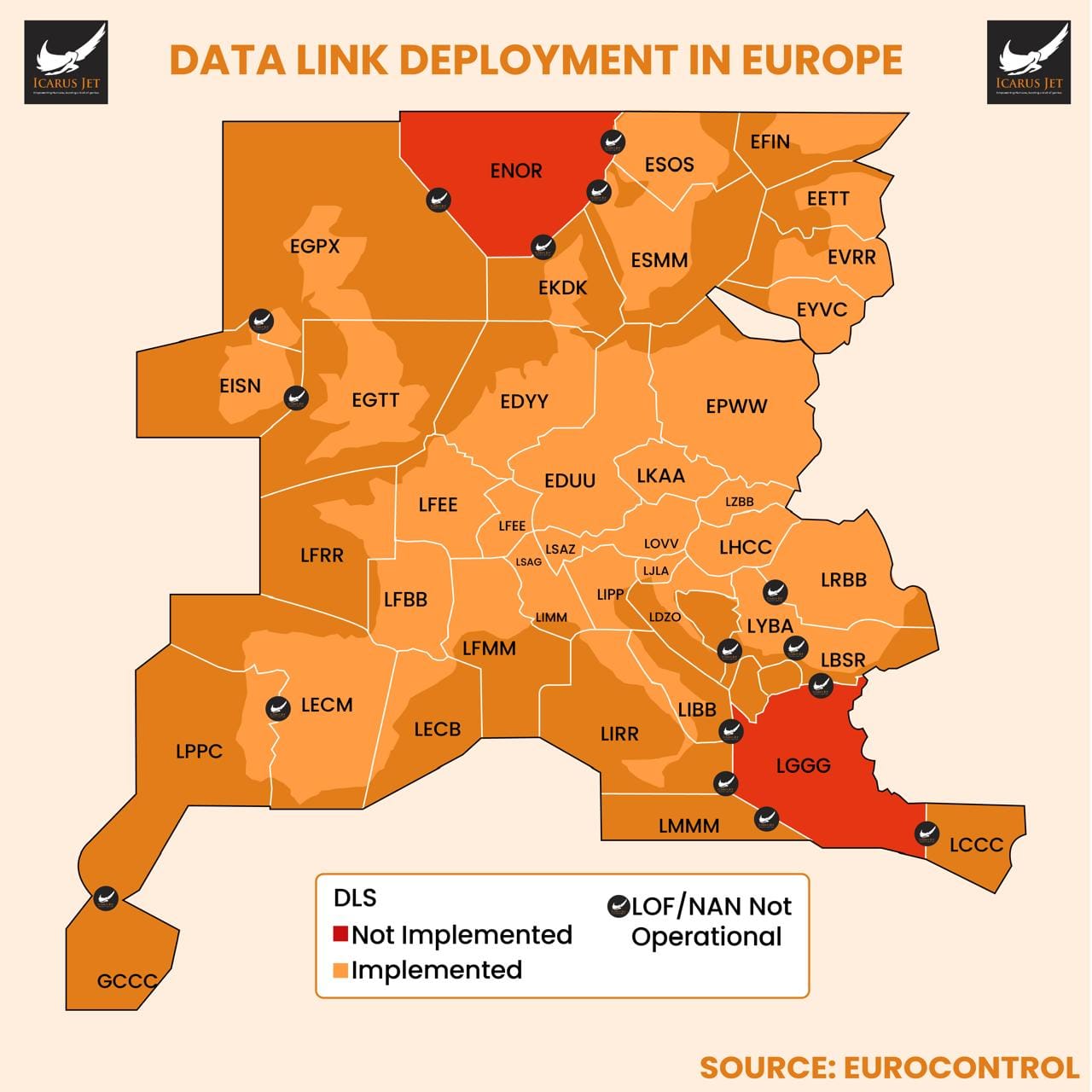The European Data Link Mandate represents a crucial step forward in evolving communication technology for the management of airspace in the continent. For private jet crews and operators who fly through European airspace, understanding the ins and outs of these mandates is key to making flights operate smoothly.
Background on the European Data Link Mandate
The European Union promulgated CPDLC, also known as Controller Pilot Data Link Communications, complementary to the Aircraft Communications Addressing and Reporting System (ACARS), with a view to further enhancing efficiency and safety of communication. It allows flight crews to communicate directly with air traffic controllers in fully digital form and relies less on voice communication, thus further clearing the air in high-traffic airspace.
Initially proposed in 2009, the European Data Link Mandate was supposed to ensure that aircraft flying above FL285-or 28,500 feet-were suitably equipped with avionics by 2013. Due to low equipment rates and various challenges in implementation, the deadline was delayed several times before the mandate officially went into force in February 2020.
Key requirements of the mandate
The European Data Link Mandate now requires aircraft flying above FL285 in European airspace to be equipped with ATN CPDLC equipment. This requires aircraft operators to install avionics capable of supporting CPDLC communications using ATN VDL Mode 2.
Failure to comply might lead to operational limitations, such as being limited to flying below FL285. However, some aircraft categories are exempt from this requirement, as we shall discuss below.
Exemptions to the European Data Link Mandate
Based on age, design, or operational profile, some aircraft are exempted from the mandate. These include:
- Older aircraft: Aircraft whose individual certificate of airworthiness was issued before January 1, 1995.
- FANS 1/A aircraft: Those whose certificate of airworthiness was issued before January 1, 2018, and which were fitted with FANS 1/A before this date.
- Smaller aircraft: Aircraft that have a maximum seating capacity of 19 passengers or less and a maximum take-off mass of 45,359 kg (100,000 lbs.) that obtained their original certification before February 5, 2020.
- State and special flights: This would include state aircraft, test flights, maintenance flights, or delivery flights.
- Permanently exempt types: Those specific aircraft types that are listed as permanently exempt.
While these exemptions certainly provide some flexibility, non-compliant aircraft do face some operational difficulties and may have to adjust flight levels or routes to avoid the required airspace.
Recent changes affecting flight planning
On July 11, 2024, there was an important amendment to the mandate relating to flight plan submissions using the Eurocontrol IFPS. In summary, the following changes were made:
- The inclusion of the J1 code, indicating CPDLC ATN VDL Mode 2 equipage, in Item 10 (field 10a) of a flight plan requires the airframe’s 24-bit address to be included in Item 18.
- Flight plans that do not include the required 24-bit address when J1 is listed will be rejected.
It is recommended that operators review and update their flight plans to comply with these new submission criteria to avoid delays/disruptions.
Logon list overview
For operators planning to use CPDLC in European airspace, aircraft have to be registered on the Logon List. The Logon List ensures that only aircraft with reliable avionics participate in CPDLC operations and do not disrupt the network. Here is a quick overview of where CPDLC services are currently required or expected soon:
- Switzerland, Germany, Poland and Maastricht UAC (upper airspace above FL245 over Belgium, the Netherlands and Luxembourg): In effect.
- France: From February 2025.
Without this capability, crossing Europe’s airspace, especially by 2025 will be virtually impossible. At the same time, operators of compliant avionics are able to get improved routings, quicker climbs, and closer to optimum communications with air traffic controllers.
Eligibility on Logon List
The Logon List applies exclusively to ATN-equipped aircraft. If your aircraft is only equipped with FANS 1/A, registration is not necessary, but this also means CPDLC services will not be available in most European regions. Operators should evaluate their avionics and determine if their aircraft qualify for registration so that they may take full advantage of CPDLC benefits.
To register your aircraft, go to Eurocontrol’s dedicated page for step-by-step instructions.
Implications for U.S. private jet crews and operators
The European DLM presents to the U.S. private jet crew flying in Europe some unique considerations in the form of operational benefits, compliance challenges, and avionics upgrades.
- Operational benefits: Aircraft on the Logon List enjoy smoother operations with fewer delays and priority routing in congested airspace.
- Compliance challenges: Non-compliance might be penalized with altitude restrictions or rejected flight plans, affecting fuel efficiency and scheduling.
- Avionics upgrades: Those aircraft not equipped with ATN CPDLC might require some costly avionics upgrades to fulfill the mandate requirements.
- Filing accuracy: Ensure that your flight planning software or service provider has all the necessary information, especially the required 24-bit address.
Final thoughts and additional resources
The European Data Link Mandate modernizes private aviation communications in Europe by bringing more efficiency and safety to its airspace. To private jet crews and operators based in the U.S., being current and prepared for this mandate keeps them operating seamlessly within European airspace.
Knowing what the mandate does and does not require, using available exemptions, and being informed about recent updates, operators can confidently fly through Europe’s skies. For more information and additional resources, refer to Eurocontrol’s official documentation or contact the Icarus Jet Trip Support Team directly at your convenience.




